Both Symmetric and Asymmetric Electro-Optic Dynamic Behavior with SSD (Smectic Single Domain) Liquid Crystals
Abstract
1. Introduction
2. About an SSD-LC Drive Mode
3. Empirical Approach to Distinguish In-Plane and Out-of-Plane Retardation Switching
4. Results and Discussion
4.1. Some Retardation Switching Variation in an SSD-LC Panel
4.2. Molecular Switching Dynamic Models in an SSD-LC Panel
4.2.1. Uniformly Stacked SSD-LC Case
4.2.2. Slightly Twisted SSD-LC Case
4.2.3. Heavily Twisted SSD-LC Case
5. Conclusions
Funding
Conflicts of Interest
References
- Mochizuki, A. In-Plane Only Retardation Switching by Certain Type of Smectic Liquid Crystal Panels. In Proceedings of the Emerging Liquid Crystal Technologies XIII, San Francisco, CA, USA, 27 January–1 February 2018; Society of Photo-Optical Instrumentation Engineers (SPIE): Bellingham, WA, USA, 2018; Volume 10555, p. 1055517. [Google Scholar]
- Mochizuki, A. Influence of Liquid Crystal Molecular Stacking Structure on In-Plane, Out-of-Plane Retardation Switching. In Proceedings of Emerging Liquid Crystal Technologies XV 113030L, San Francisco, CA, USA, 1–6 February 2020; Society of Photo-Optical Instrumentation Engineers (SPIE): Bellingham, WA, USA, 2020; Volume 11303, p. 113030L. [Google Scholar] [CrossRef]
- Mochizuki, A. In-Plane Retardation Switching Device. U.S. Patent No. 10,539,848, 21 January 2020. [Google Scholar]
- Clark, N.A.; Lagerwall, S.T. Submicrosecond Bistable Electro-Optic Switching in Liquid Crystals. Appl. Phys. Lett. 1980, 36, 899–901. [Google Scholar] [CrossRef]
- Clark, N.A.; Handschy, M.A.; Lagerwall, S.T. Ferroelectric Liquid Crystal Electro-Optic Using the Surface Stabilized Structure. Mol. Cryst. Liq. Cryst. 1983, 94, 213–233. [Google Scholar] [CrossRef]
- Garoff, S.; Meyer, R.B. Electroclinic Effect at the A-C Phase Change in a Chiral Smectic Liquid Crystal. Phys. Rev. Lett 1977, 38, 848–851. [Google Scholar] [CrossRef]
- Meyer, R.B.; Pelcovits, R.A. Electroclinic Effect and Modulated Phases in Smectic Liquid Crystals. Phys. Rev. 2002, 65, 061704. [Google Scholar] [CrossRef]
- Selinger, J.V.; Collings, P.J.; Shashidhar, R. Field-Dependent Tilt and Birefringence of Electroclinic Liquid Crystals: Theory and Experiment. Phys. Rev. E 2001, 64, 061705. [Google Scholar] [CrossRef]
- De Vries, A.; Ekachai, A.; Spielberg, N. Why the Molecules are Tilted in all Smectic A Phases, and How the Layer Thickness Can be Used to Measure Orientational Disorder. Mol. Cryst. Liq. Cryst. 1979, 49, 143–152. [Google Scholar] [CrossRef]
- Clark, N.A.; Bellini, T.; Shao, R.F.; Coleman, D.; Bardon, S.; Link, D.R.; Chen, X.H.; Wand, M.D.; Walba, D.M.; Rudquist, P. Lagerwall, S.T. Electro-Optic Characteristics of de Vries Tilted Smectic Liquid Crystals: Analog Behavior in the Smectic A* and Smectic C* Phases. Appl. Phys. Lett. 2002, 80, 4097–4099. [Google Scholar] [CrossRef]
- Chandani, A.D.L.; Hasiwara, T.; Suzuki, Y.; Ouchi, Y.; Takezoe, H.; Fukuda, A. Tristable Switching in Surface Stabilized Ferroelectric Liquid Crystals with a Large Spontaneous Polarization. Jpn. J. Appl. Phys. 1988, 27, L729–L732. [Google Scholar] [CrossRef]
- Furukawa, K.; Terashima, K.; Ichikawa, M.; Saitoh, S.; Miyazawa, K.; Inukai, T. Chiral Smectic C Liquid Crystals Having an Electronegative Substituent Ortho to the Chiral Tail Group – a Study of a Factor Determining the Magnitude of Spontaneous Polarization. Ferroelectrics 1988, 85, 451–459. [Google Scholar] [CrossRef]
- Chandani, A.D.L.; Georecka, E.; Ouchi, Y.; Takezoe, H.; Fukuda, A. Antiferroelectric Chiral Smectic Phases Responsible for the Tristable Switching in MHPOBC. Jpn. J. Appl. Phys. 1989, 28, L1265–L1268. [Google Scholar] [CrossRef]
- Beresnev, L.A.; Chgrinov, V.G.; Dergachev, D.I.; Poshidaev, E.P.; Funfschilling, J.; Schadt, M. Deformed Helix Ferroelectric Liquid Crystal Display: A New Electrooptic Mode in Ferroelectric Chiral Smectic C Liquid Crystals. Liq. Cryst. 1989, 5, 1171–1177. [Google Scholar] [CrossRef]
- Kaur, S.; Thankur, A.K.; Chauhan, R.; Bawa, S.S.; Biradar, A.M. Bistability in Deformed Helix Ferroelectric Liquid Crystal. J. Appl. Phys. 2004, 96, 2547. [Google Scholar] [CrossRef]
- Mayer, R.B. Piezoelectric Effects in Liquid Crystals. Phys. Rev. Lett. 1969, 22, 918–921. [Google Scholar] [CrossRef]
- Prost, J.; Marcerou, J.P. On the Microscopic Interpretation of Flexoelectricity. J. Phys. Fr. 1977, 38, 315–324. [Google Scholar] [CrossRef]
- Lavrentovich, O.D.; Nazarenko, V.G.; Sergan, V.V.; Durand, G. Dielectric Quenching of the Electric Polar Surface Instability in a Nematic Liquid Crystal. Phys. Rev. A 1992, 45, R6969–R6972. [Google Scholar] [CrossRef] [PubMed]
- Barbero, G.; Durand, G. Flexoelectric Instability of Liquid Crystals. Phys. Rev. A 1987, 35, 1294–1300. [Google Scholar] [CrossRef]
- Paul, T.; Saha, J. Origin and Structure of Liquid Crystalline Blue Phase III. Nat. Res. Sci. Rep. 2020, 10, 1–11. [Google Scholar] [CrossRef]
- Yan, J.; Wu, S.-T. Polymer-Stabilized Blue Phase Liquid Crystals: Tutorial. Opt. Mater. Express 2011, 1, 1527–1535. [Google Scholar] [CrossRef]
- Mochizuki, A. Molecular Tilting Effect on Smectic Liquid Crystal Sub-Phase Stability from its Retardation Switching Behavior. J. Mol. Liq. 2018, 267, 456–468. [Google Scholar] [CrossRef]
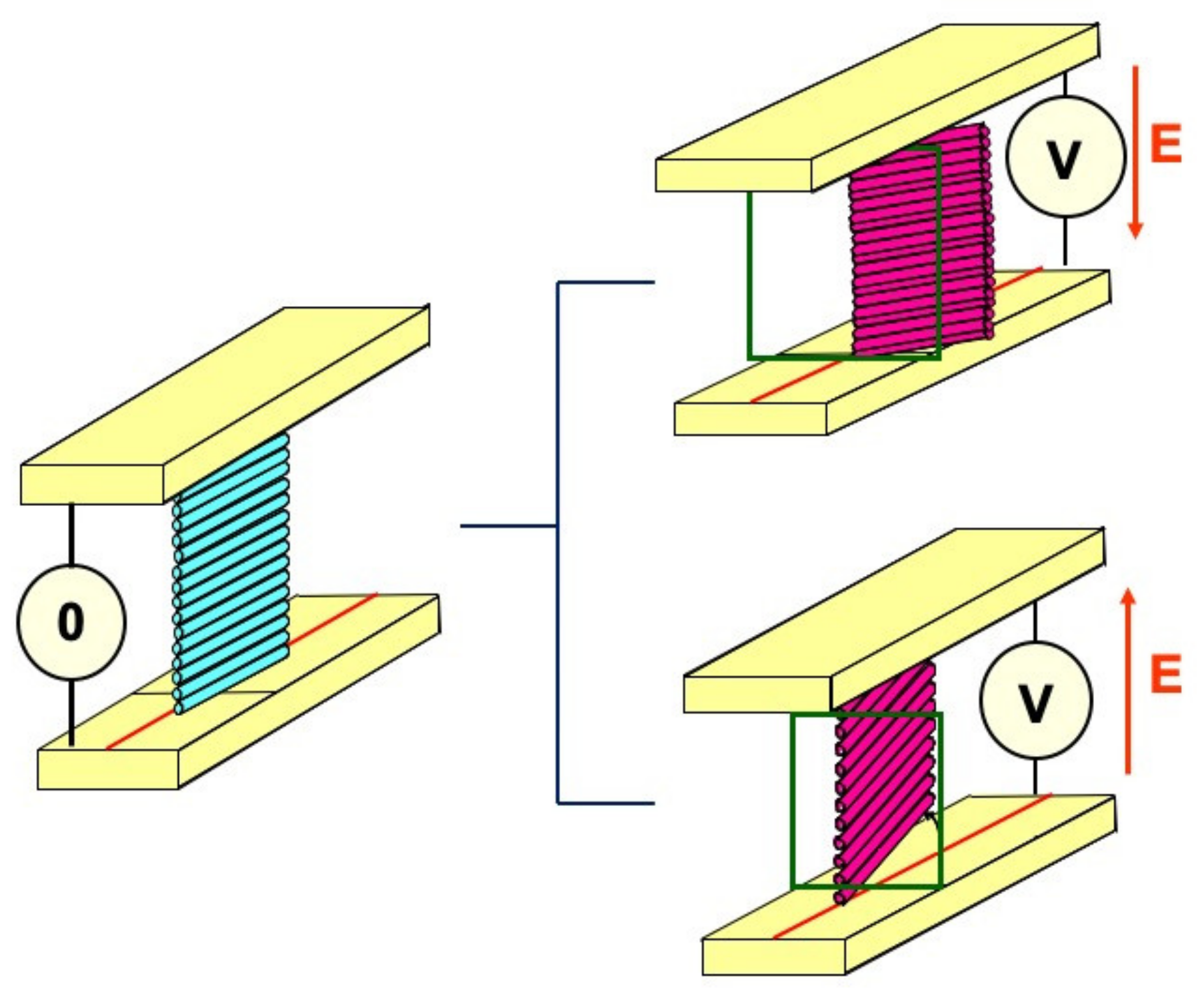

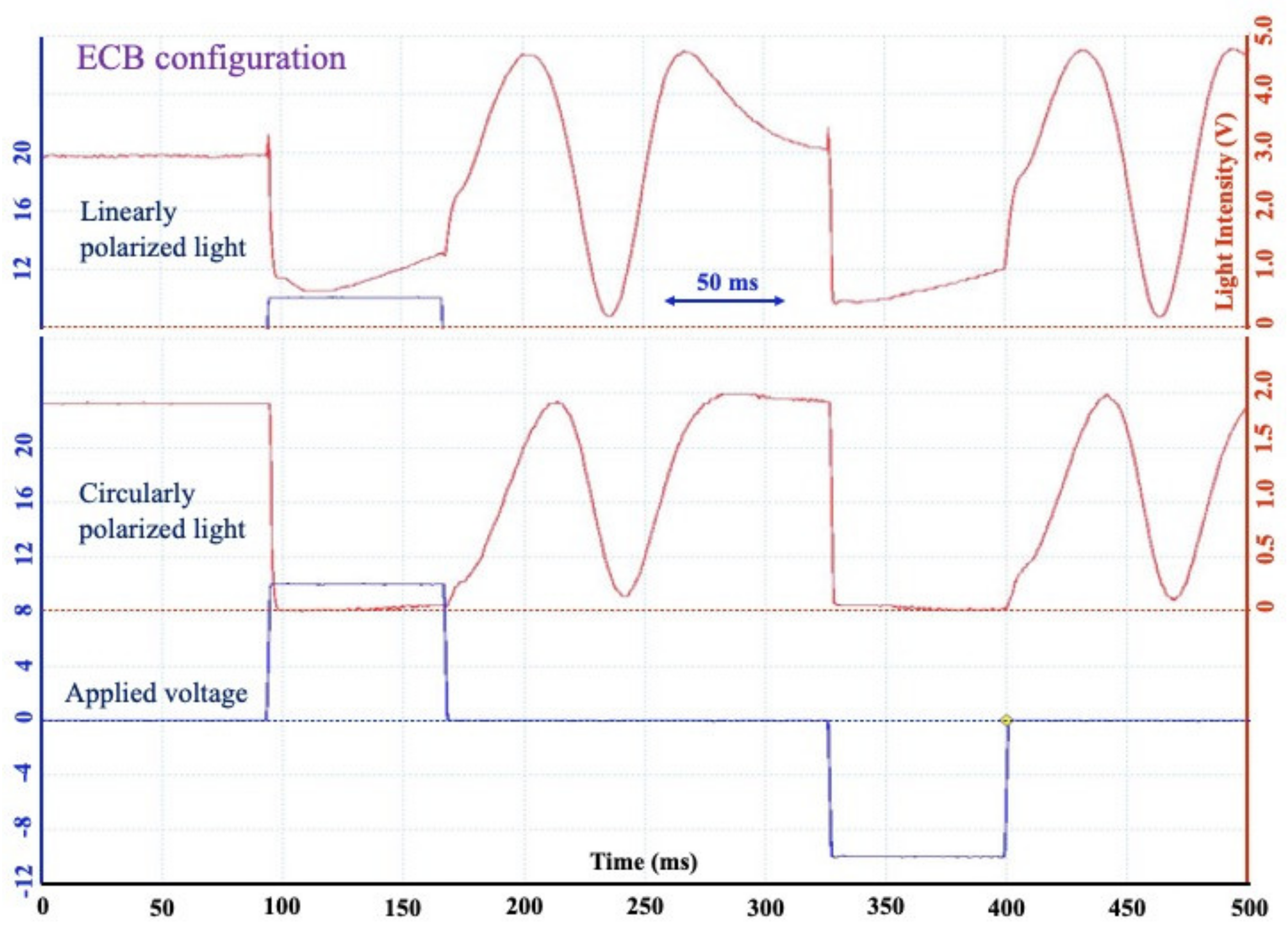
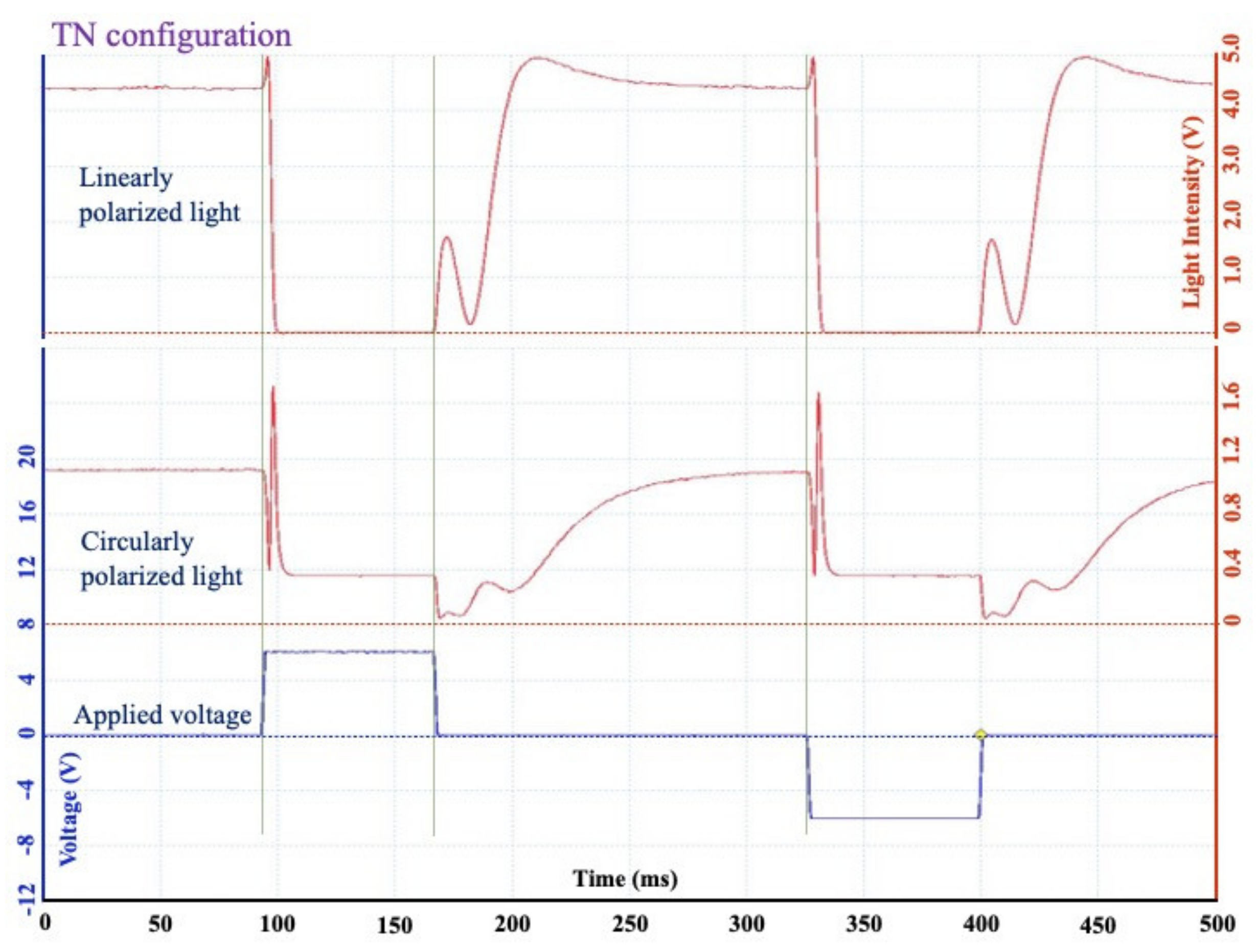
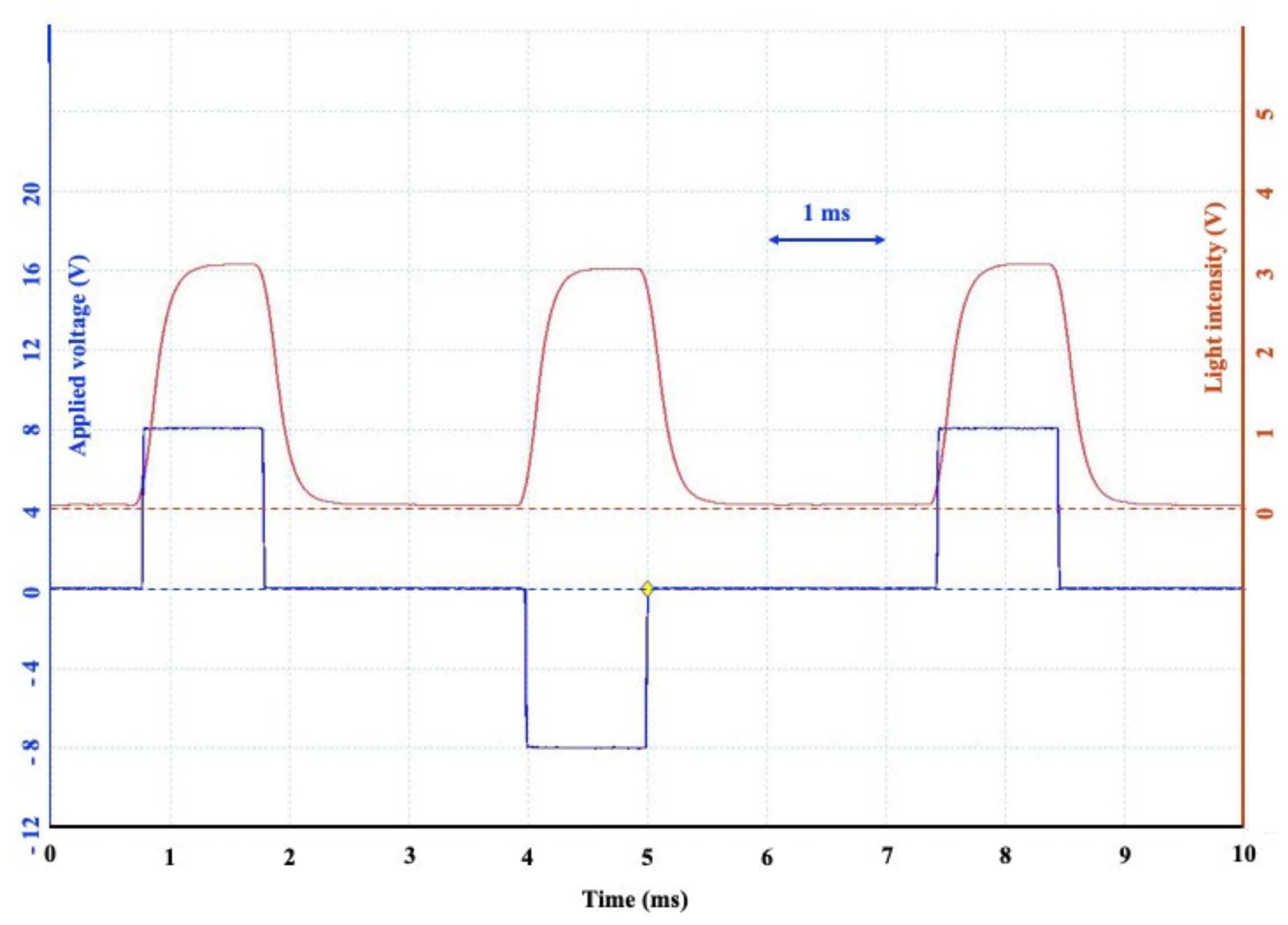
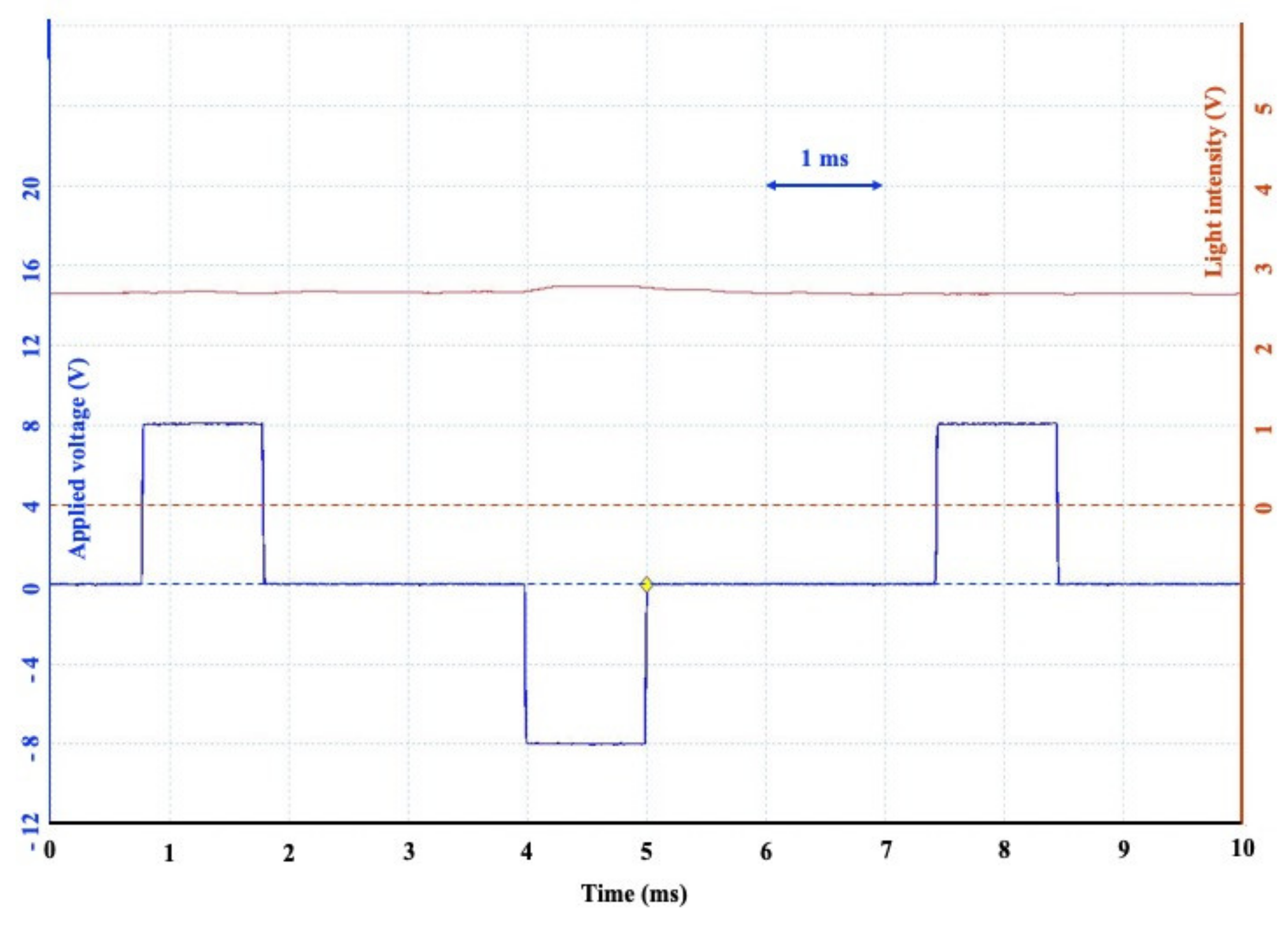


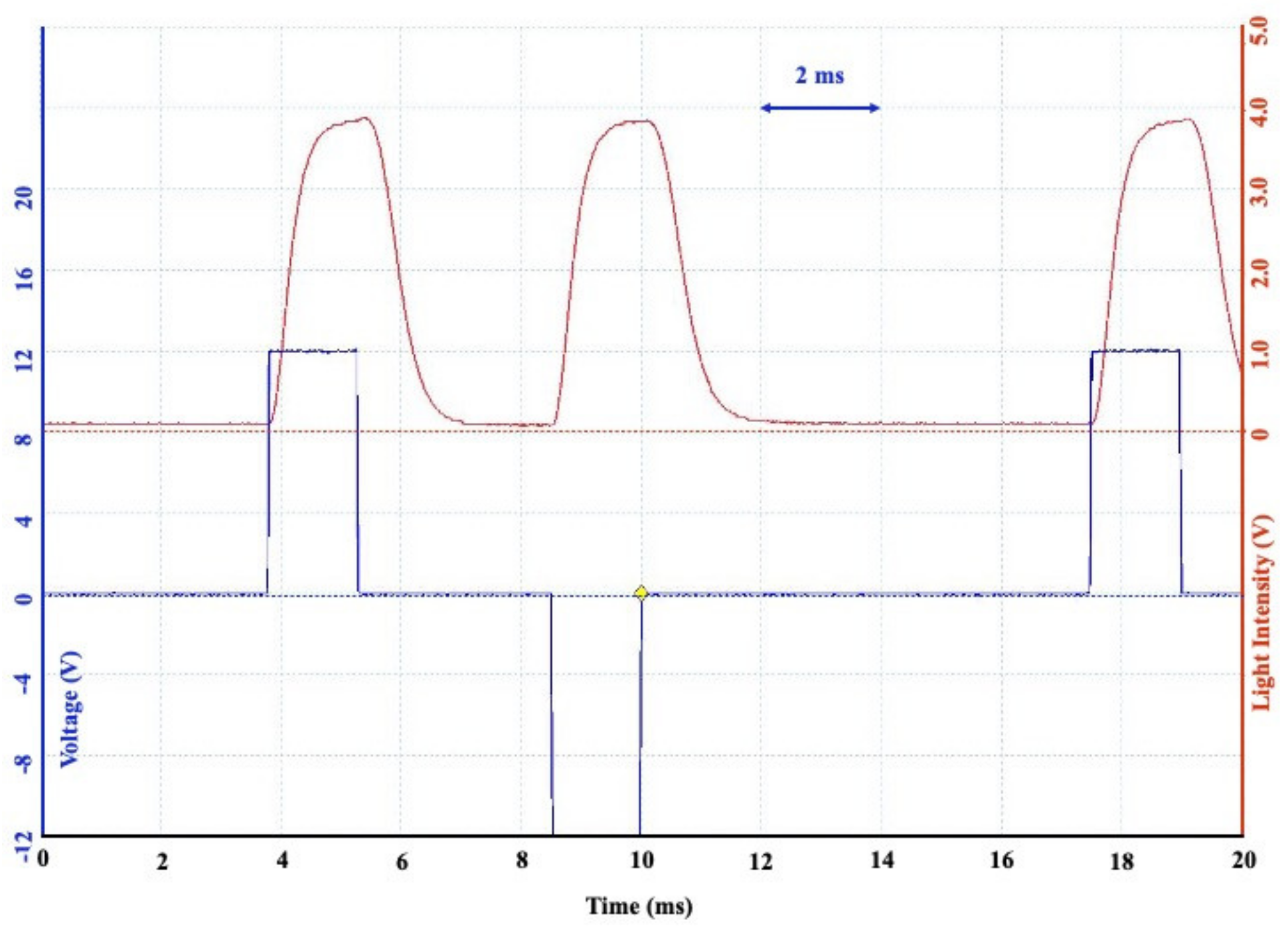
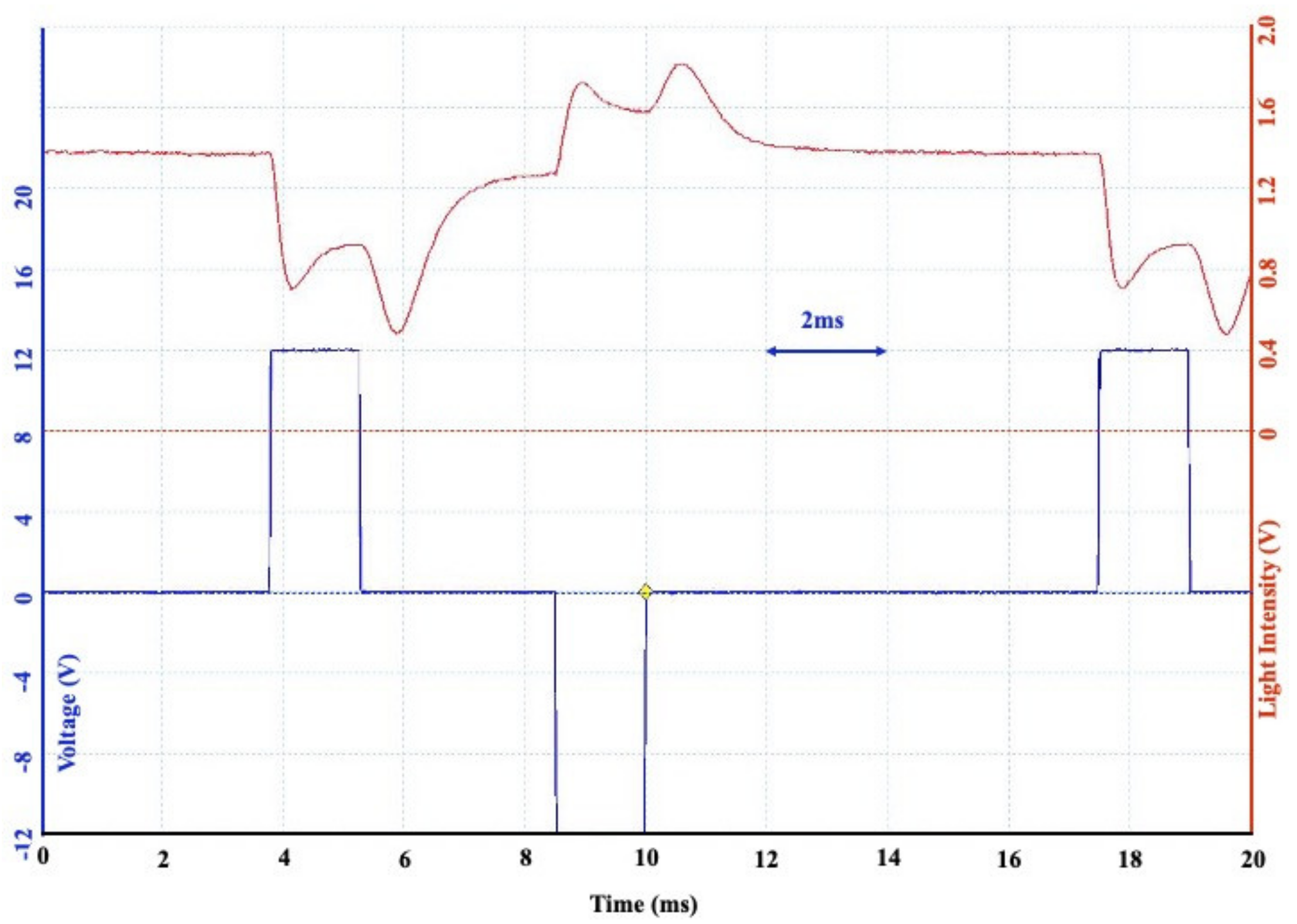
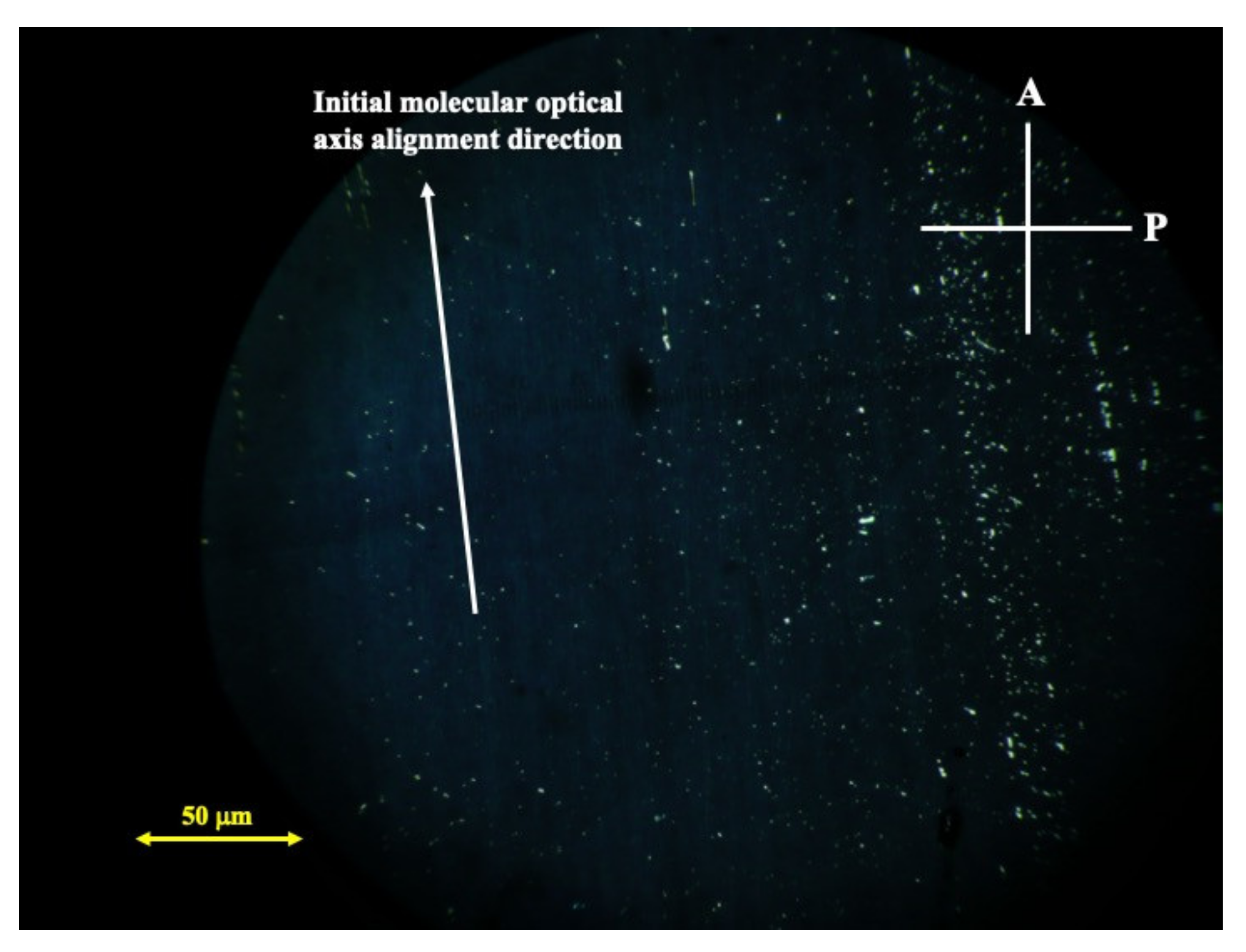
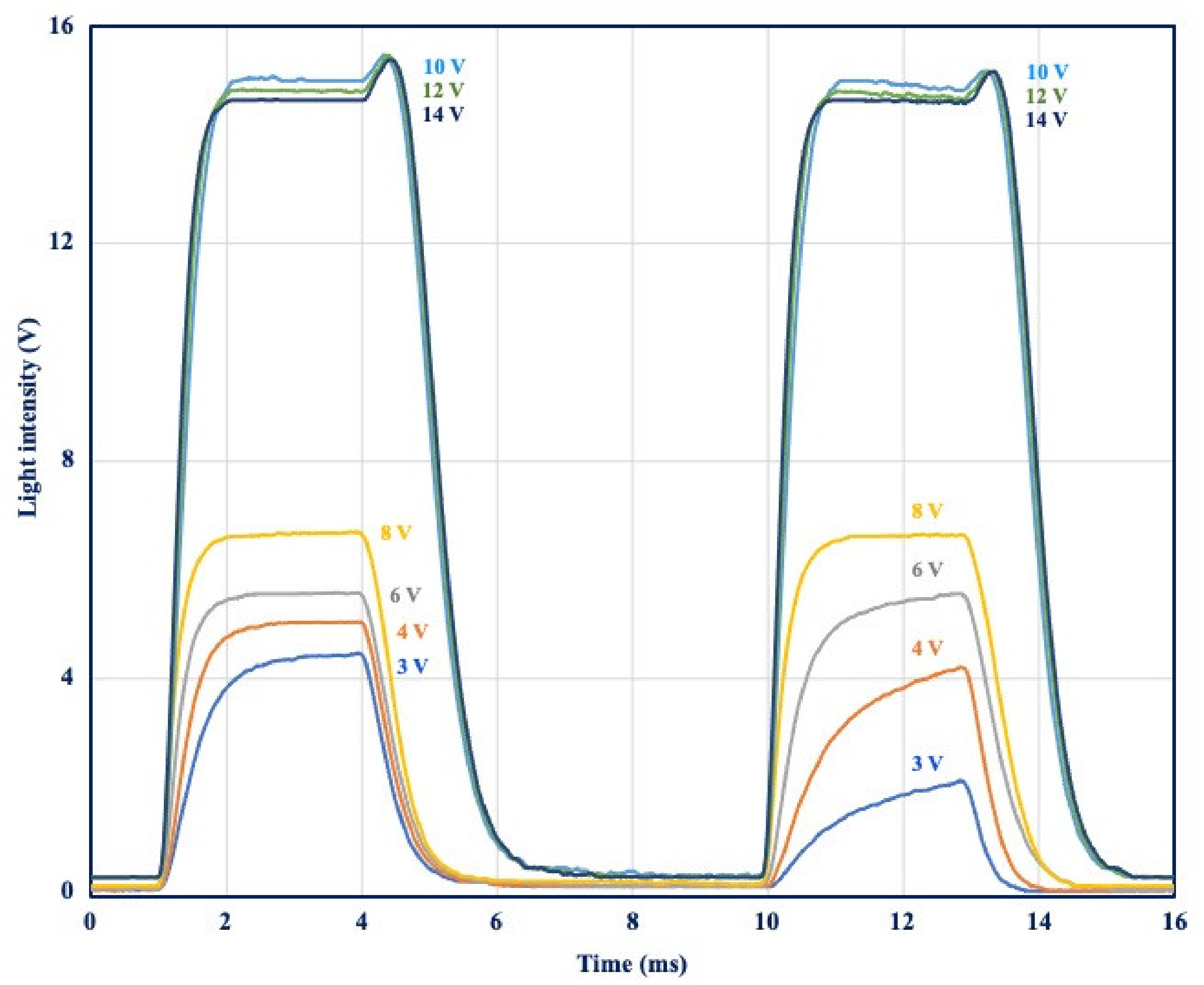
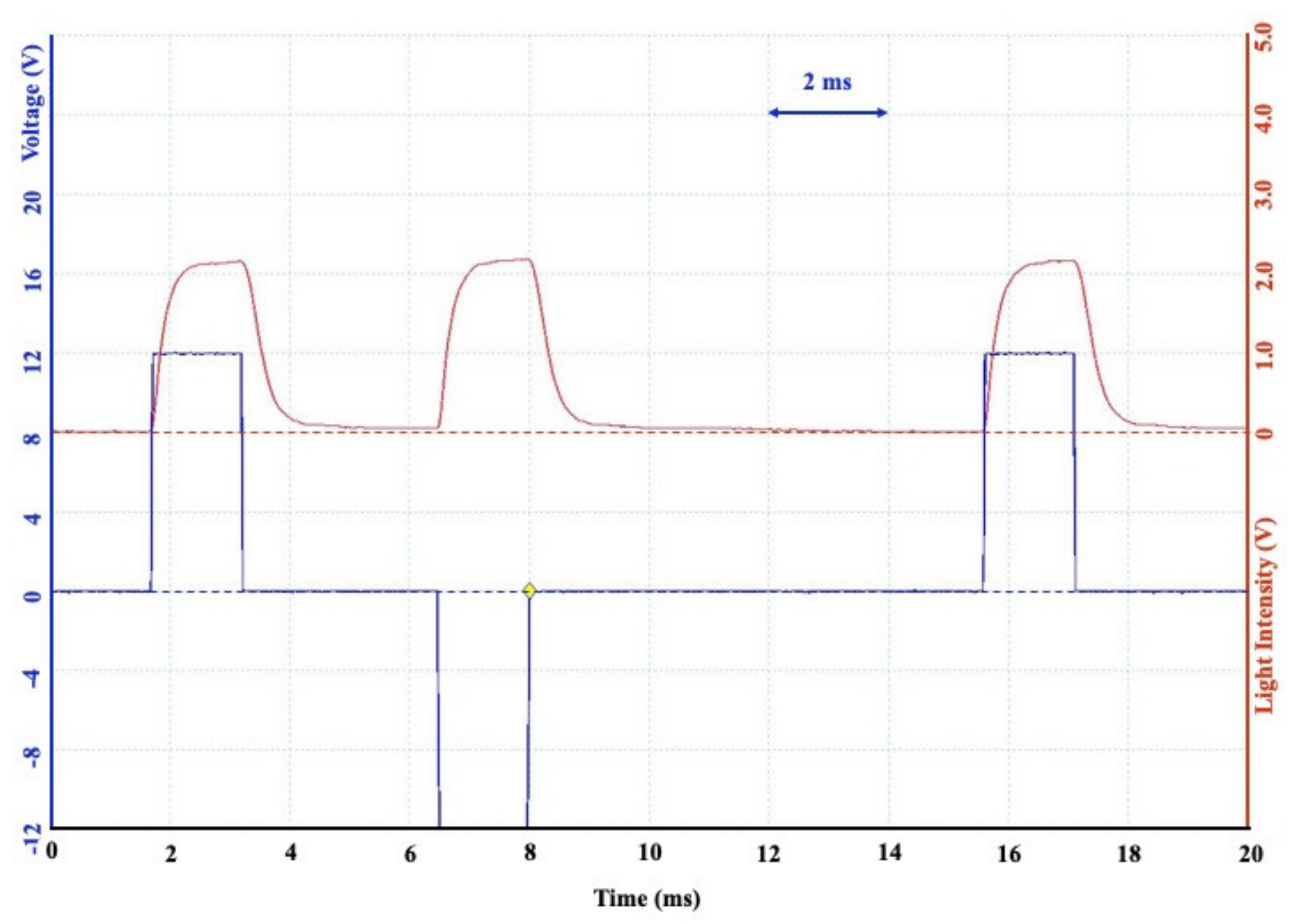
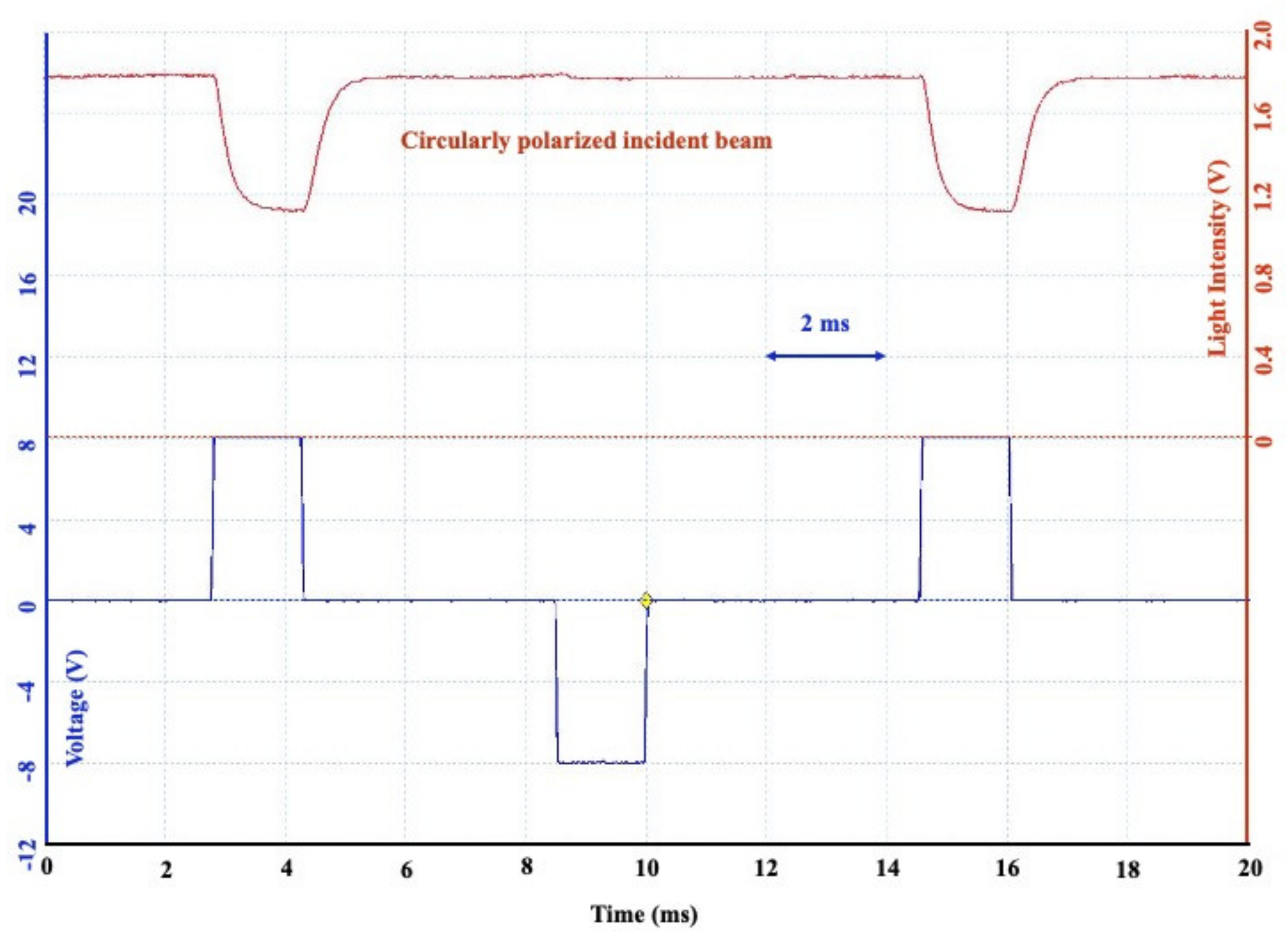


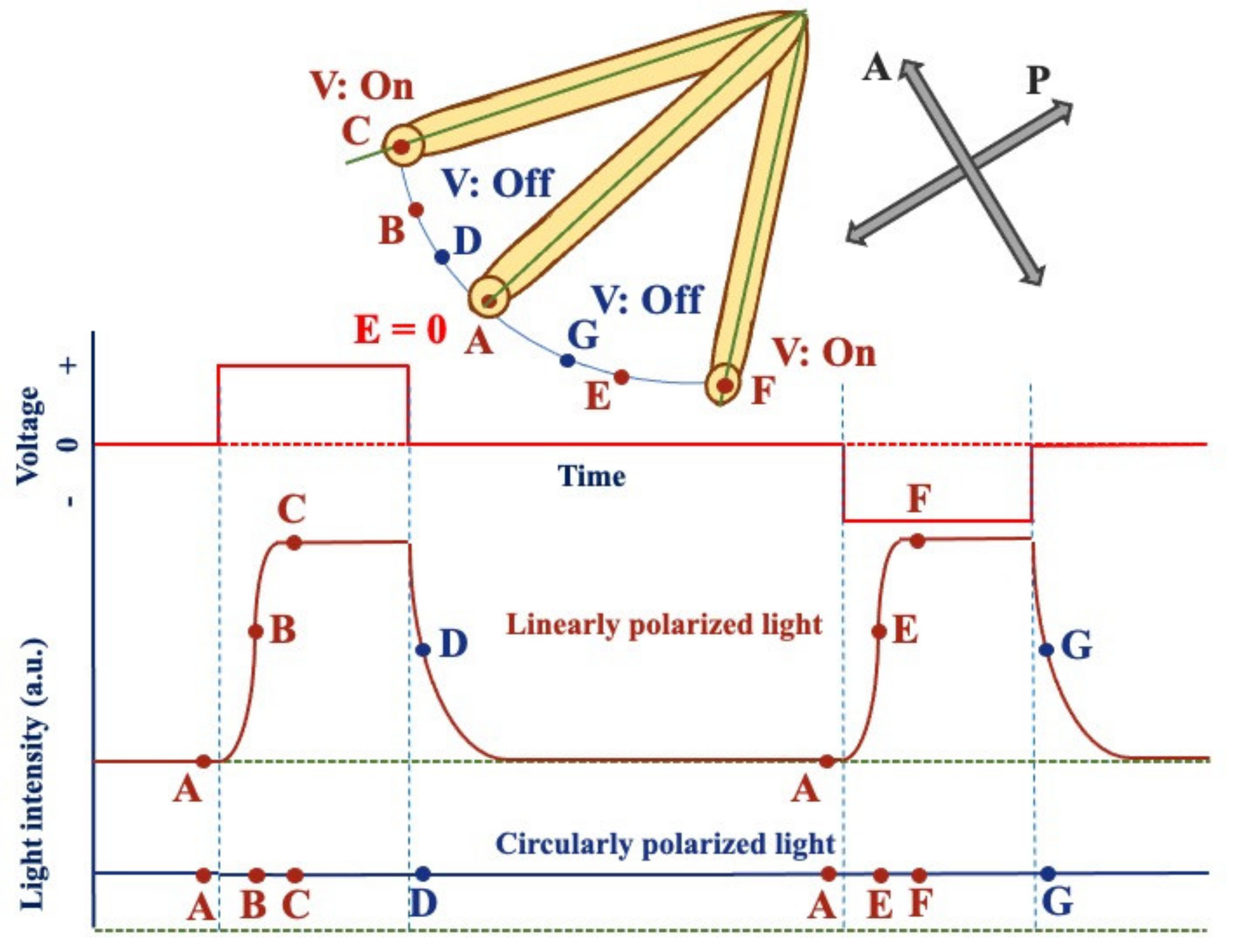
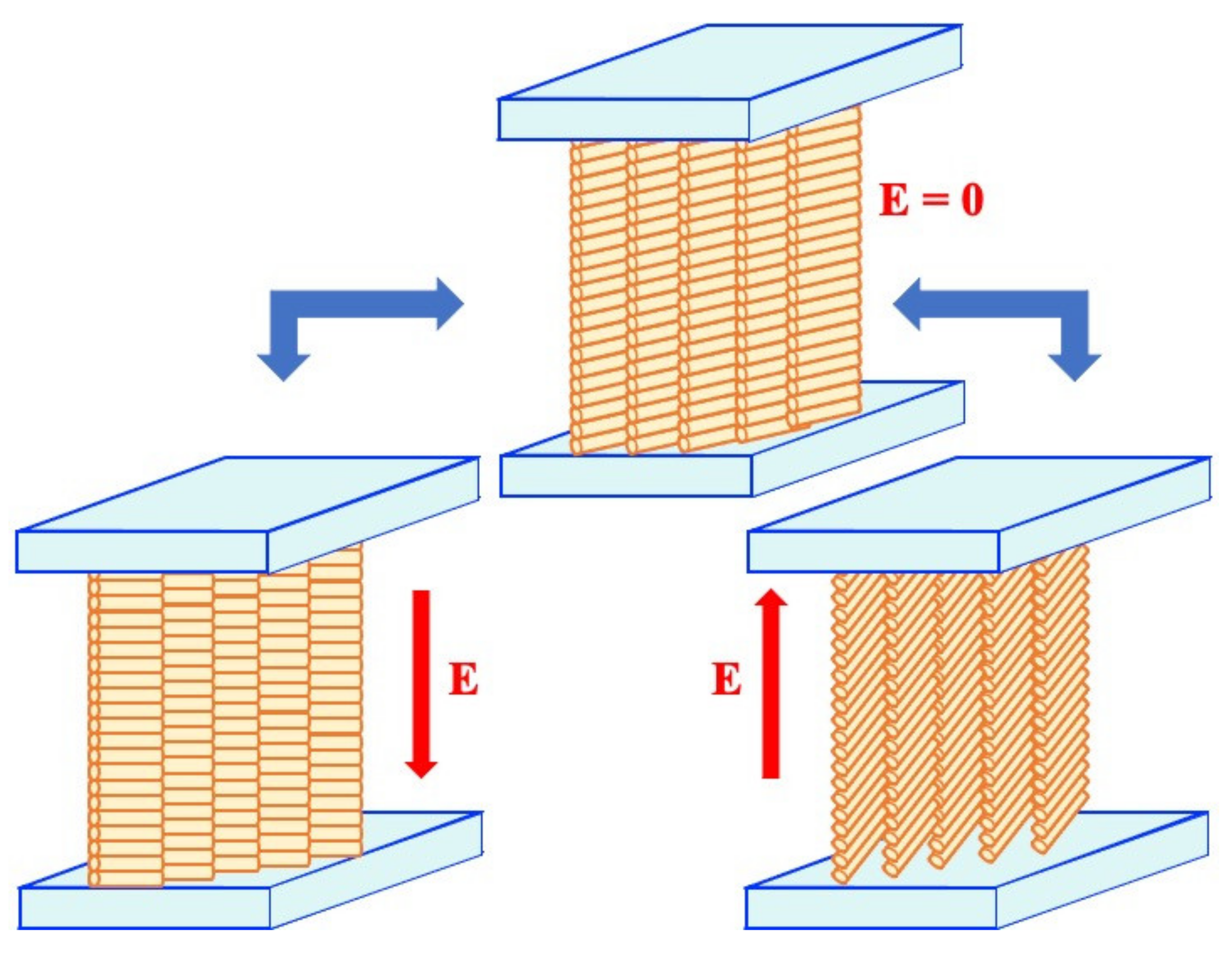
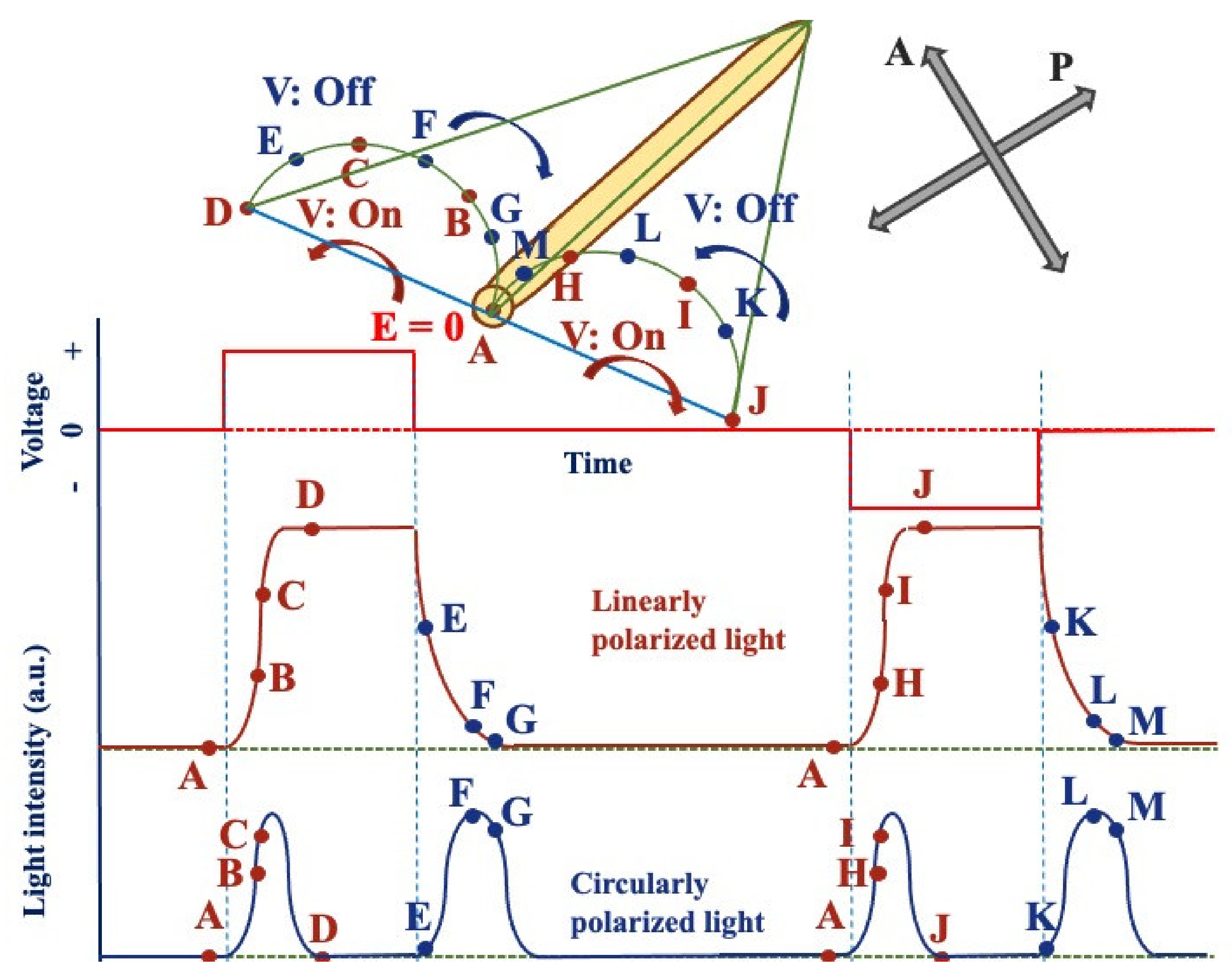
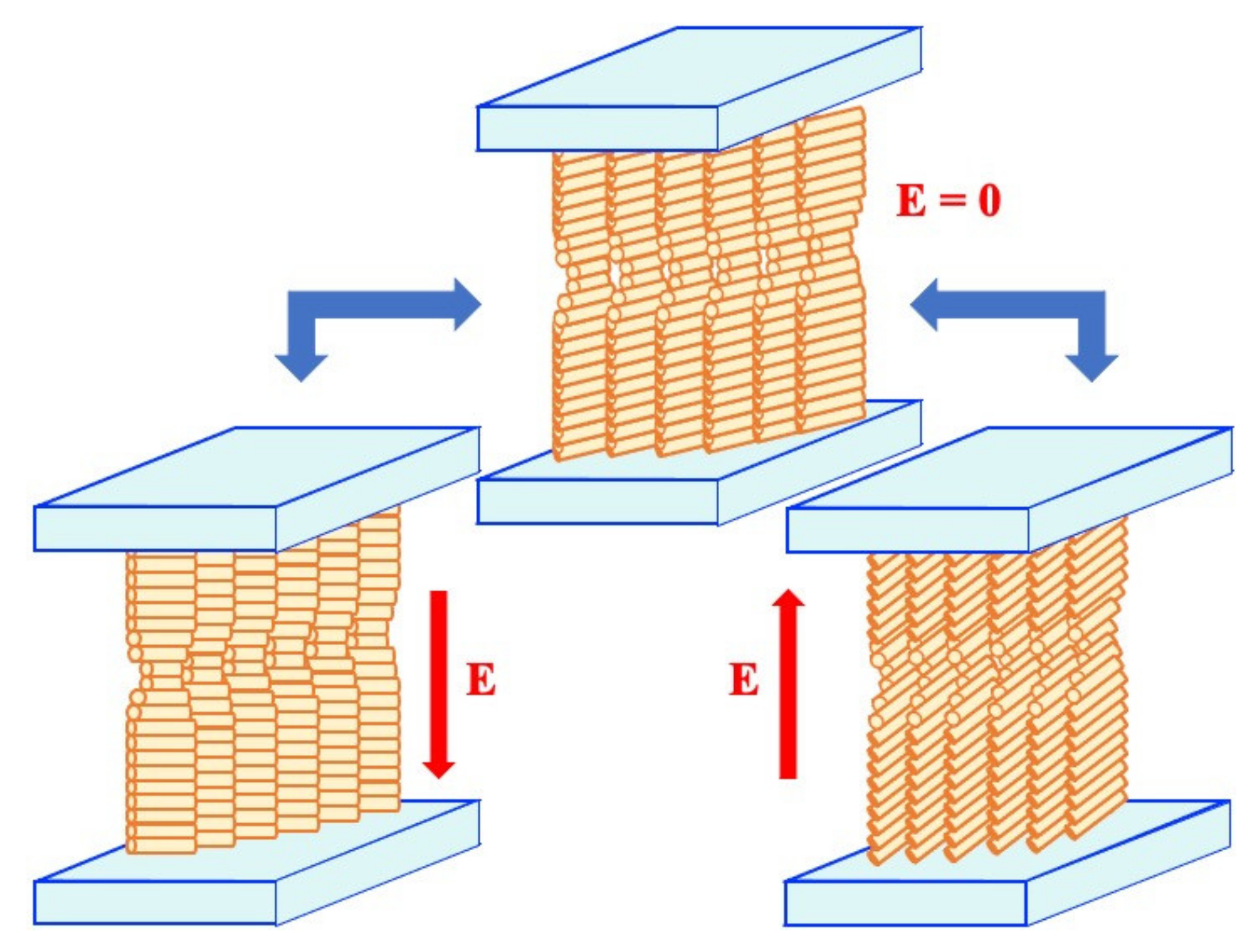
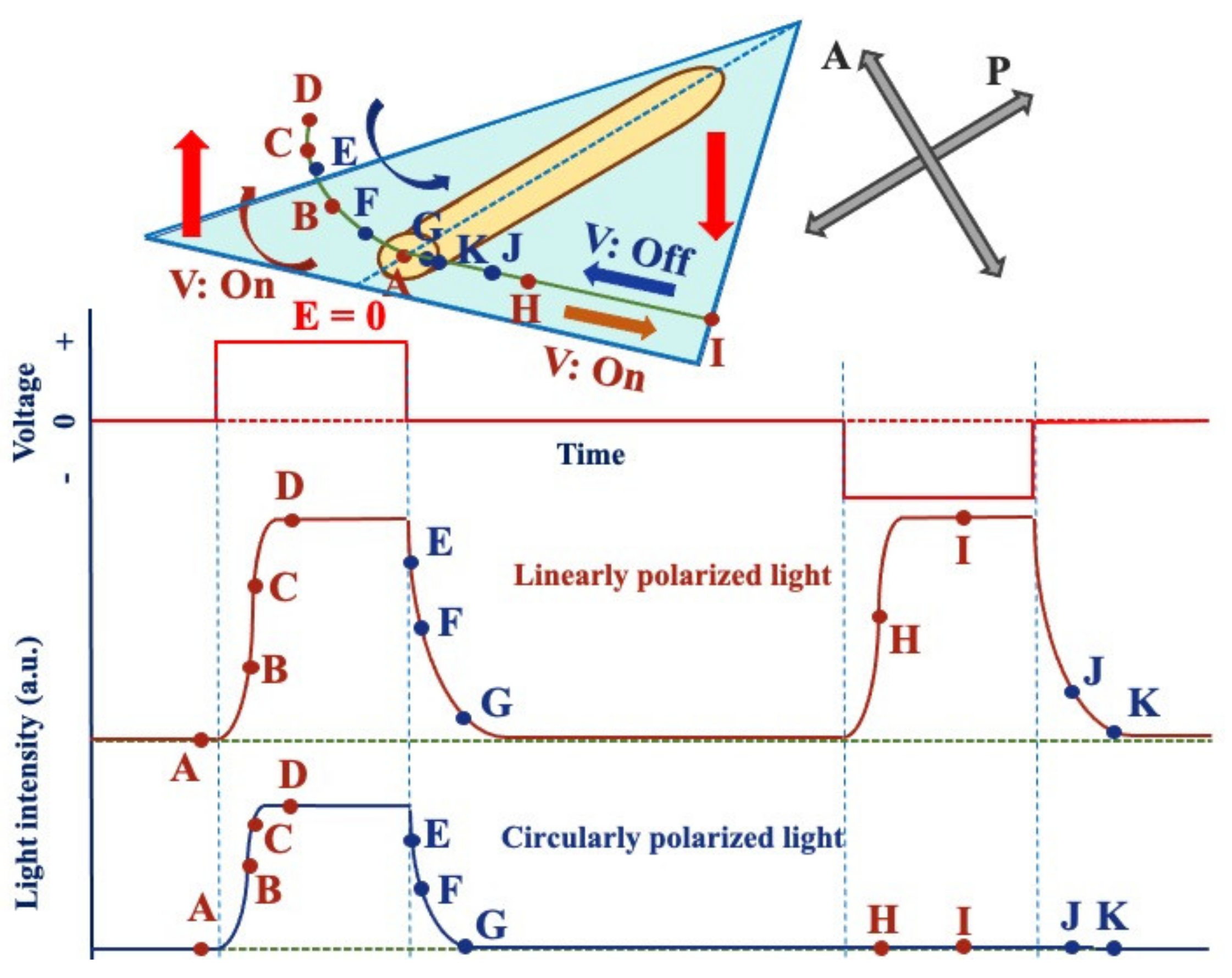

Publisher’s Note: MDPI stays neutral with regard to jurisdictional claims in published maps and institutional affiliations. |
© 2021 by the author. Licensee MDPI, Basel, Switzerland. This article is an open access article distributed under the terms and conditions of the Creative Commons Attribution (CC BY) license (http://creativecommons.org/licenses/by/4.0/).
Share and Cite
Mochizuki, A. Both Symmetric and Asymmetric Electro-Optic Dynamic Behavior with SSD (Smectic Single Domain) Liquid Crystals. Crystals 2021, 11, 337. https://doi.org/10.3390/cryst11040337
Mochizuki A. Both Symmetric and Asymmetric Electro-Optic Dynamic Behavior with SSD (Smectic Single Domain) Liquid Crystals. Crystals. 2021; 11(4):337. https://doi.org/10.3390/cryst11040337
Chicago/Turabian StyleMochizuki, Akihiro. 2021. "Both Symmetric and Asymmetric Electro-Optic Dynamic Behavior with SSD (Smectic Single Domain) Liquid Crystals" Crystals 11, no. 4: 337. https://doi.org/10.3390/cryst11040337
APA StyleMochizuki, A. (2021). Both Symmetric and Asymmetric Electro-Optic Dynamic Behavior with SSD (Smectic Single Domain) Liquid Crystals. Crystals, 11(4), 337. https://doi.org/10.3390/cryst11040337




